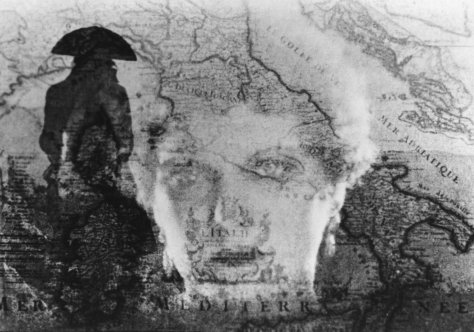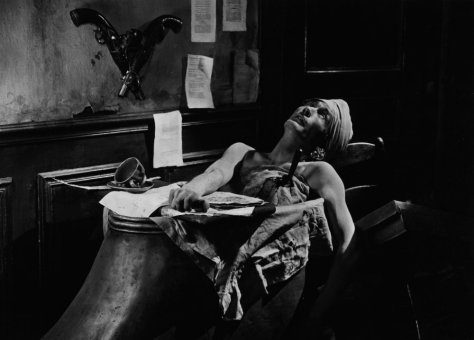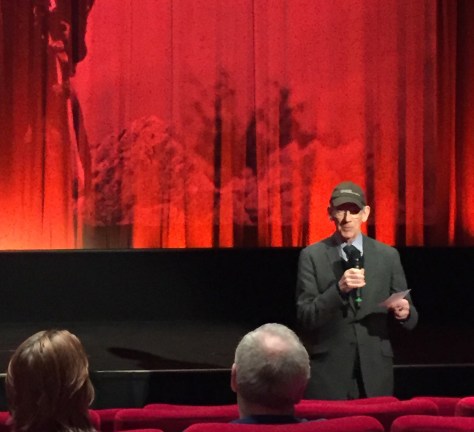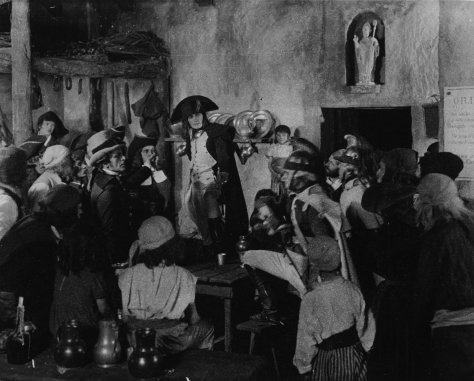What if all your silent cinema dreams came true? What if they found those missing reels of Greed, or a pristine print of 4 Devils, and you had to admit you were disappointed? Say it isn’t so. But consider this: if 80% of silent films are lost, does that mean that silent cinephiles, by definition, are hooked on the chase, the thrill of forbidden fruit? There are so many films we will never get to see, and others that we see only rarely or in incomplete versions – perhaps we’re all addicted to the legend.
It’s worth thinking about at least, and it was at the forefront of my mind as I sat down early this morning to watch a preview of the digital restoration of Abel Gance’s Napoléon. Yes, that Napoléon, the version heroically pieced together by Kevin Brownlow and magnificently scored by Carl Davis. I have been lucky enough to see it once before, at the Royal Festival Hall in 2013 – before that, I was too skint to stump up for a ticket. It was amazing, and I will never forget the frisson I felt as the film began and I thought: “Finally, finally I am going to watch this thing!”

However, if sitting down to watch Napoléon were just as simple as sitting down to watch Coronation Street – no dinner reservation, no train to London, no babysitter, no £40 ticket – would the thrill be the same? As I took my seat in NFT1 I began to worry that the sheen of Napoléon would have faded, but the truth is no, it has just shifted a little.

When I saw Napoléon last, I was hyper-alert, aware that I was trying to “fix” each image in my mind before it disappeared for good, knowing that it might be (would be) years before I saw it again. This time, I could relax, knowing that Napoléon and I will meet again soon. I could enjoy it, and I could be more critical. For example, knowing that this film is no longer verging on “holy grail” territory, its maddening habit of telling you in advance how important, how epic this story will be, can begin to grate. Yes, Napoléon is grand, but it is also grandiose.

This is the rub though – how will that finale look at your local cinema. Or on your laptop or TV? Or your tablet or phone? The film will be available to stream from BFI Player, you know. I guess any detail you might otherwise miss you could freeze-frame to explore. Though that is hardly in the spirit. It’s inevitably going to be diminished, but you have to put your faith in the preceding four-and-a-bit hours of cinematic experimentation expanding your imagination before it arrives.

Abel Gance thought he was inventing a new kind of cinema when he made Napoléon back in 1927, and he was disappointed that other people didn’t follow suit. Now generations of people have the chance to be inspired by his work. By shrinking Napoléon down to a digital file, the BFI may have increased its sphere of influence.
- Napoléon is released in cinemas on 11 November 2016.
- And Napoléon is on BFI DVD and Blu-ray and BFI Player from 21 November. You can pre-order a disc here.
- And don’t forget, you can still catch Napoléon on a grand scale, at the Royal Festival Hall with the Philharmonia Orchestra on 6 November.
- You can read my review of the 2013 Napoléon show here.
- And watch this space for more on Napoléon, here on Silent London, from Kevin Brownlow and Carl Davis.

Reblogged this on Patrimonio Audiovisual and commented:
La cuestión que se pregunta es si pierde emoción el cine mudo en casa… para él no, pero claro… que edición estamos viendo? y, realmente es tan impresionante en la pequeña pantalla y altavoces del ordenador?
Ahí lo dejo…
Do you know if there is a way to find out which locations in the UK this is showing ? Can’t find the info anywhere
Linked to elsewhere on the site I think… here it is anyway http://www.bfi.org.uk/whats-on/bfi-film-releases/napoleon